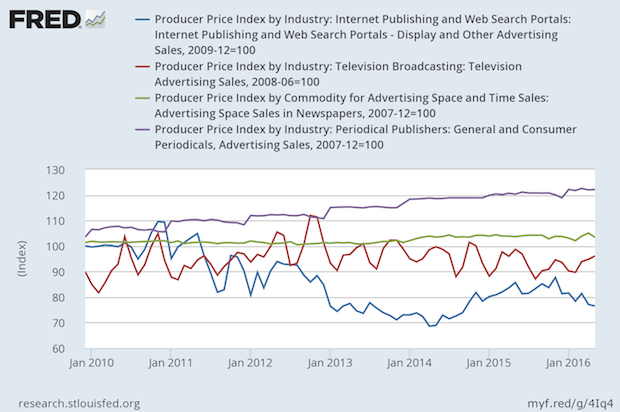
The direction of the real prices of advertising seem to move in counterintuitive ways. Remember, prices are the result of interactions of supply and demand and expectations for their future changes. Just by looking at a price you cannot tell why it is what it is without having additional information. The chart shows that magazine advertising has gone up by more than 20% since 2010, but it's hard to know how much might have been bundled in those prices.
Pricing reports sent to the Bureau of Labor Statistics are supposed to be in constant units, but it's hard to determine those in service environments, and it's hard to quantify a wink or a nod in an advertising agreement. But all advertising has its version of winks and nods. Newspapers and television have not changed much, with newspapers having a steadier ride but television having a bumpier one. Internet advertising is about 25% cheaper than it was in 2010.
Digital advertising of some sort is about half of advertising dollars today. While it's growing in size it's decreasing in cost, with more and more digital advertising opportunities being created every day. There's an old saying in economics that supply creates its own demand, and that might be exactly the case here.














